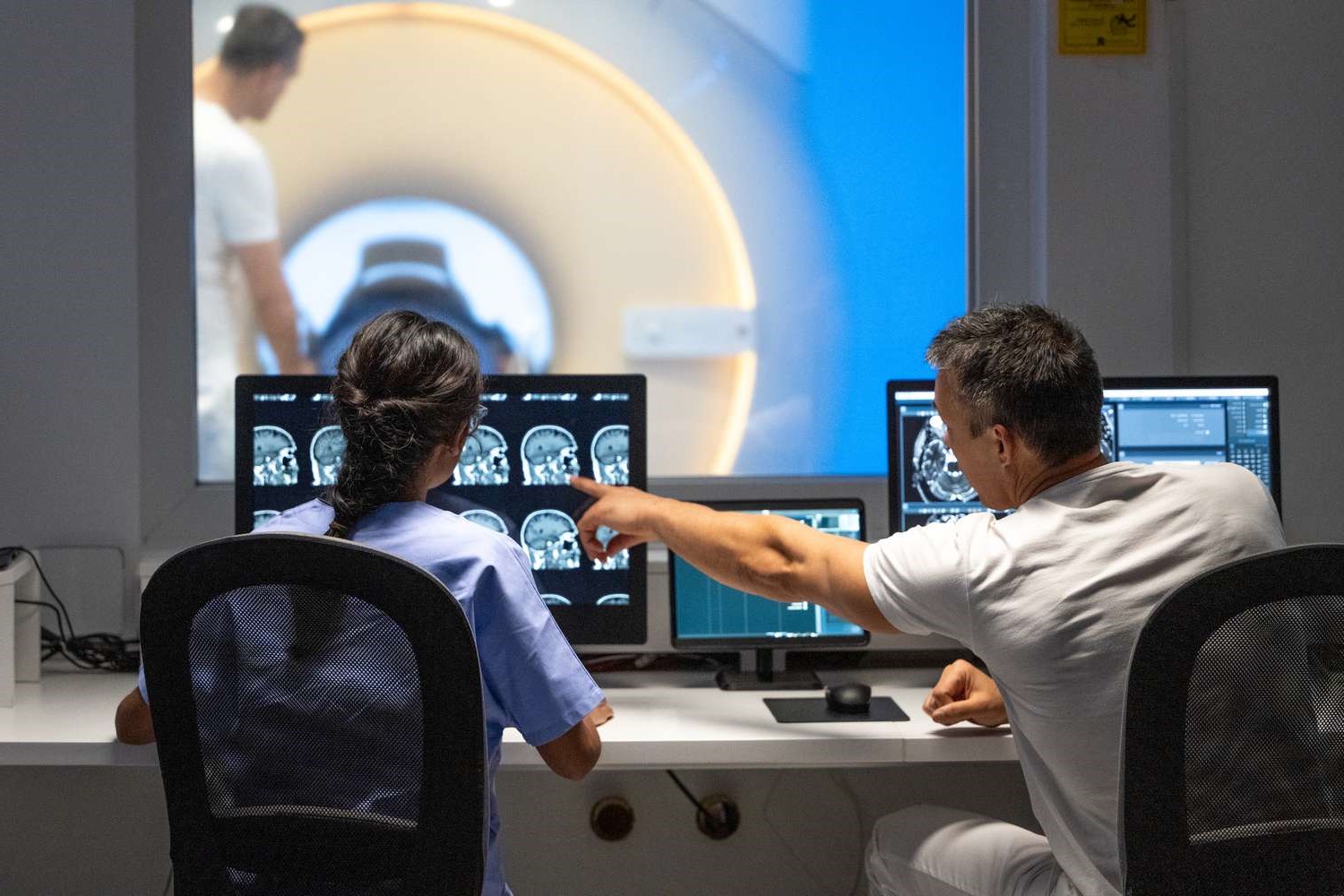
Lateral Medullary Syndrome, also known as Wallenberg Syndrome, is a rare neurological disorder caused by a stroke in the lateral part of the medulla oblongata. This condition can lead to a variety of symptoms, including difficulty swallowing, hoarseness, dizziness, and loss of pain and temperature sensation on one side of the body. The syndrome often results from a blockage in the vertebral or posterior inferior cerebellar artery. Understanding the symptoms and causes of Lateral Medullary Syndrome is crucial for early diagnosis and effective treatment. In this blog post, we'll explore 40 intriguing facts about this condition, shedding light on its complexities and impact on patients' lives.
Key Takeaways:
- Lateral Medullary Syndrome, also known as Wallenberg's Syndrome, is a neurological condition caused by a stroke in the brainstem. Recognizing symptoms early and seeking timely treatment is crucial for managing this syndrome.
- Understanding the causes, symptoms, and treatment options for Lateral Medullary Syndrome can help in prevention and management. Early intervention and support from healthcare providers and caregivers are essential for improving outcomes.
What is Lateral Medullary Syndrome?
Lateral Medullary Syndrome, also known as Wallenberg's Syndrome, is a neurological condition caused by a stroke in the lateral part of the medulla oblongata. This part of the brainstem controls many vital functions. Understanding this syndrome can help in recognizing symptoms and seeking timely treatment.
-
Lateral Medullary Syndrome is named after Adolf Wallenberg, who first described it in 1895.
-
The medulla oblongata is located in the brainstem, connecting the brain to the spinal cord.
-
This syndrome is most commonly caused by a blockage in the posterior inferior cerebellar artery (PICA), which supplies blood to the lateral medulla.
-
Symptoms can vary widely depending on the exact location and extent of the stroke.
Symptoms of Lateral Medullary Syndrome
Recognizing the symptoms of Lateral Medullary Syndrome is crucial for early diagnosis and treatment. Here are some common signs to look out for:
-
Patients often experience difficulty swallowing (dysphagia), making it hard to eat or drink.
-
Hoarseness or a change in voice quality is another common symptom.
-
Vertigo and dizziness can occur due to the involvement of the vestibular nuclei.
-
Nystagmus, or rapid involuntary eye movements, is frequently observed.
-
Loss of pain and temperature sensation on one side of the face and the opposite side of the body is a hallmark of this syndrome.
-
Ataxia, or lack of muscle coordination, can affect balance and movement.
Causes and Risk Factors
Understanding what causes Lateral Medullary Syndrome can help in prevention and management. Here are some key factors:
-
Atherosclerosis, or the buildup of plaque in the arteries, is a major risk factor.
-
High blood pressure increases the risk of stroke, including those leading to Lateral Medullary Syndrome.
-
Smoking is a significant risk factor, contributing to vascular disease.
-
Diabetes can damage blood vessels, increasing the likelihood of a stroke.
-
Heart disease, including atrial fibrillation, can lead to blood clots that cause strokes.
Diagnosis and Treatment
Early diagnosis and treatment are essential for managing Lateral Medullary Syndrome. Here’s how it’s typically diagnosed and treated:
-
Magnetic Resonance Imaging (MRI) is the gold standard for diagnosing this syndrome, providing detailed images of the brain.
-
Computed Tomography (CT) scans can also be used, especially in emergency settings.
-
Blood tests may be conducted to check for underlying conditions, such as diabetes or high cholesterol.
-
Treatment often involves managing the underlying cause, such as controlling blood pressure or diabetes.
-
Anticoagulant or antiplatelet medications may be prescribed to prevent further strokes.
-
Physical therapy can help improve muscle coordination and balance.
-
Speech therapy is often necessary for those with swallowing difficulties.
Prognosis and Recovery
The prognosis for Lateral Medullary Syndrome varies depending on the severity of the stroke and the timeliness of treatment. Here are some important points:
-
Early intervention can significantly improve outcomes.
-
Some patients may experience long-term disabilities, such as persistent difficulty swallowing or speaking.
-
Rehabilitation can greatly enhance recovery, helping patients regain lost functions.
-
Support from family and caregivers is crucial for emotional and physical recovery.
-
Regular follow-up with healthcare providers is essential to monitor progress and manage any ongoing issues.
Interesting Facts about Lateral Medullary Syndrome
Here are some lesser-known but fascinating facts about Lateral Medullary Syndrome:
-
It is one of the most common types of brainstem stroke.
-
The syndrome can affect both young and older adults, though it is more common in older individuals.
-
Some patients may experience a phenomenon called "crossed sensory findings", where they lose sensation on one side of the face and the opposite side of the body.
-
The syndrome can sometimes be misdiagnosed as other neurological conditions, making accurate diagnosis crucial.
-
Research is ongoing to better understand the mechanisms of this syndrome and improve treatment options.
-
Patients with Lateral Medullary Syndrome may also experience hiccups, which can be persistent and difficult to treat.
-
The syndrome can lead to Horner's syndrome, characterized by drooping eyelids, constricted pupils, and lack of sweating on one side of the face.
-
Some patients report a sensation of "pins and needles" in the affected areas.
-
The condition can also cause problems with blood pressure regulation, leading to episodes of high or low blood pressure.
-
Lateral Medullary Syndrome is sometimes referred to as "Wallenberg's Syndrome" in honor of the neurologist who first described it.
-
The syndrome can affect the autonomic nervous system, leading to issues with heart rate and digestion.
-
Patients may experience a loss of taste on one side of the tongue.
-
Despite its challenges, many patients with Lateral Medullary Syndrome can lead fulfilling lives with appropriate treatment and support.
Final Thoughts on Lateral Medullary Syndrome
Lateral Medullary Syndrome, also known as Wallenberg's Syndrome, is a rare but serious condition. It results from a stroke in the lateral part of the medulla oblongata. Symptoms can include difficulty swallowing, hoarseness, dizziness, and loss of pain and temperature sensation on one side of the body. Early diagnosis and treatment are crucial for managing symptoms and improving quality of life. Rehabilitation often involves physical therapy, speech therapy, and sometimes medications to manage pain or other symptoms. Understanding the condition helps in recognizing the signs early and seeking appropriate medical care. Though challenging, many patients can lead fulfilling lives with proper management and support. Always consult healthcare professionals for accurate diagnosis and treatment options. Stay informed, stay proactive, and prioritize your health.
Frequently Asked Questions
Was this page helpful?
Our commitment to delivering trustworthy and engaging content is at the heart of what we do. Each fact on our site is contributed by real users like you, bringing a wealth of diverse insights and information. To ensure the highest standards of accuracy and reliability, our dedicated editors meticulously review each submission. This process guarantees that the facts we share are not only fascinating but also credible. Trust in our commitment to quality and authenticity as you explore and learn with us.


